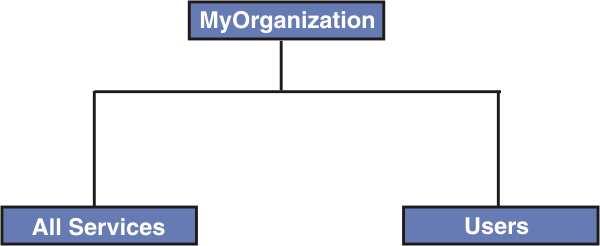Organization tree models
An organization model can use simple or complex branching. For example, within a branch in an organization tree, a structure of services and users might provide.
- All-in-one organization
Both the user and the services are within a single organization. An all-in-one model for all services and users has a limited use. Although simple to administer, the model is not scalable to a large population of users.
- Separate branches for services and for users
Separate branches might provide a services branch and a user branch in an organization. Issues can arise in administration and deployment for different depths of subordinate objects in each branch. Designing the structure must consider the difficulty in moving services and policies within a tree in comparison to the relative ease in moving users..
Objects that are created within an organizational container must typically be deleted and created again to put the object into a different organizational container. However, existing users can be moved to a different business unit by use of a transfer..
For example, an organization might manage services as one branch in a resource tree and employees in another branch in a structure similar to Figure 1.
Figure 1. Example configuration 
- Exact replication of an entire hierarchy of a continuously changing
business
We might attempt to maintain an ongoing, exact tree that represents the business organization. However, changes that occur in the hierarchy and membership of the persons business unit itself then require exact synchronization of the users within an electronic organization tree.
Parent topic: Organization tree planning